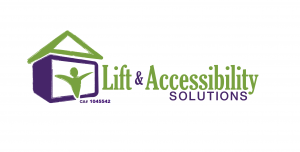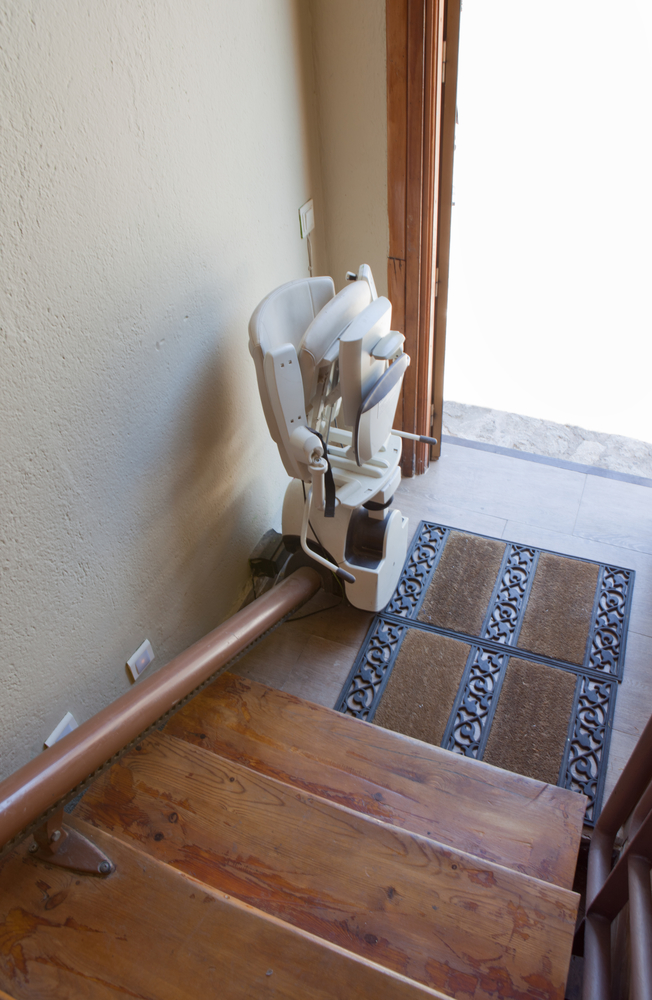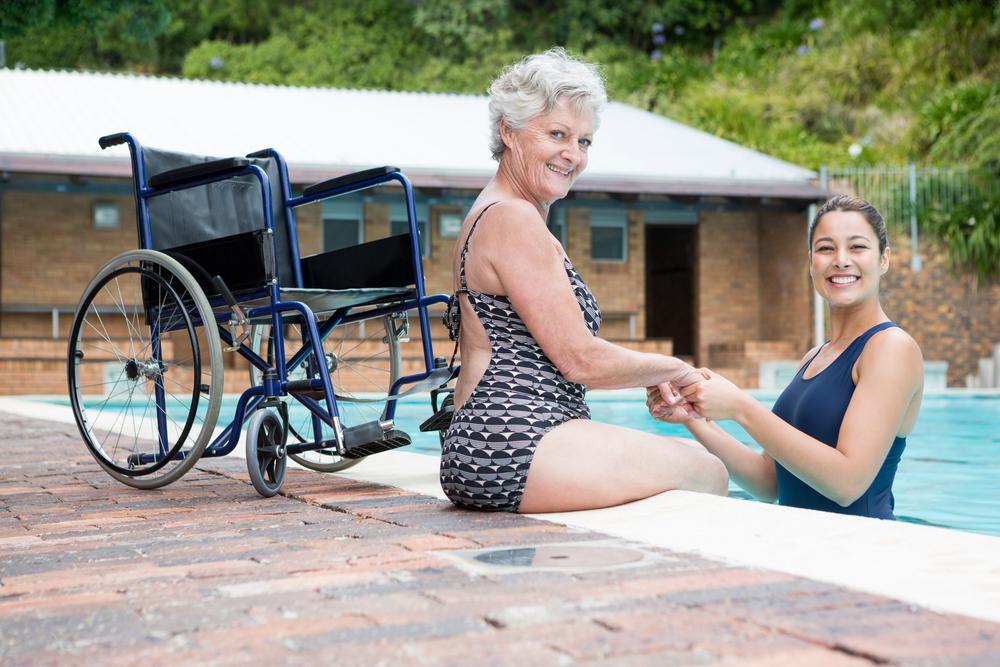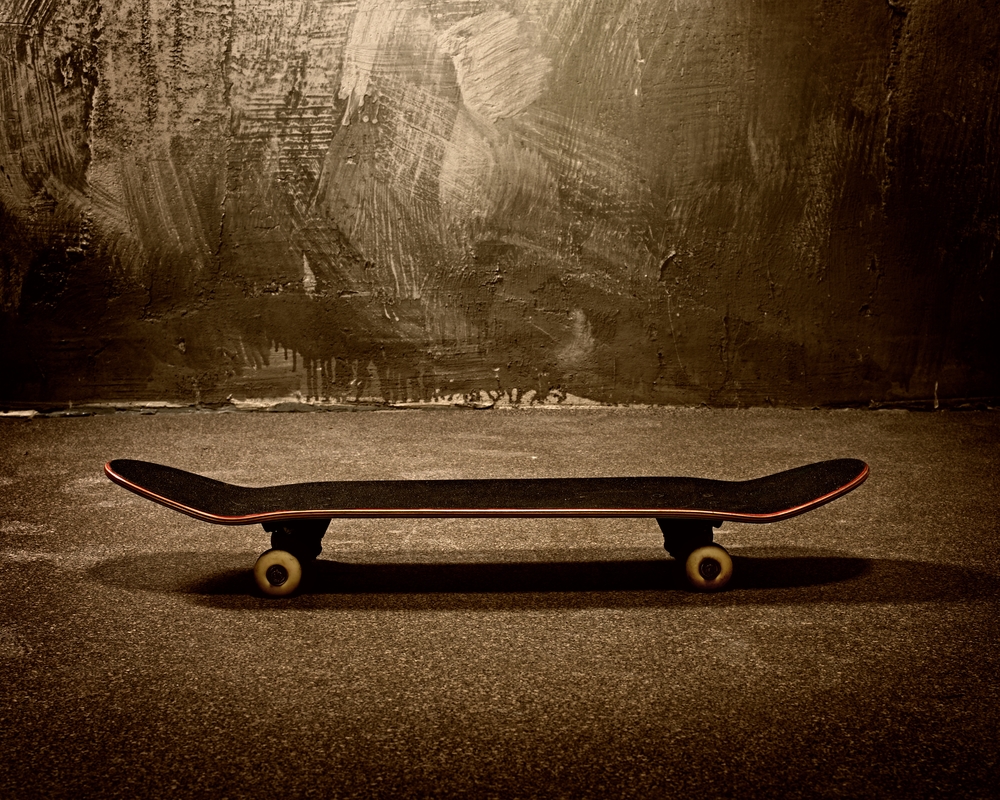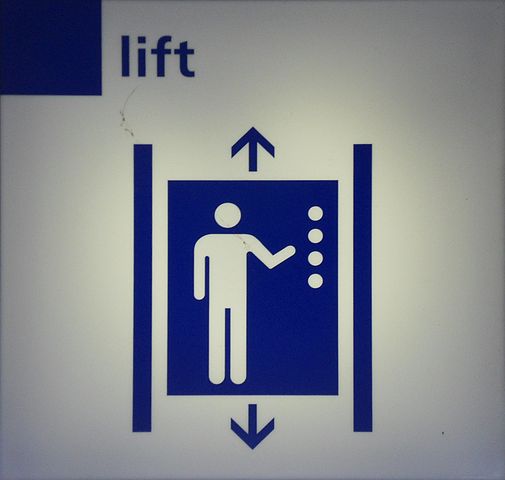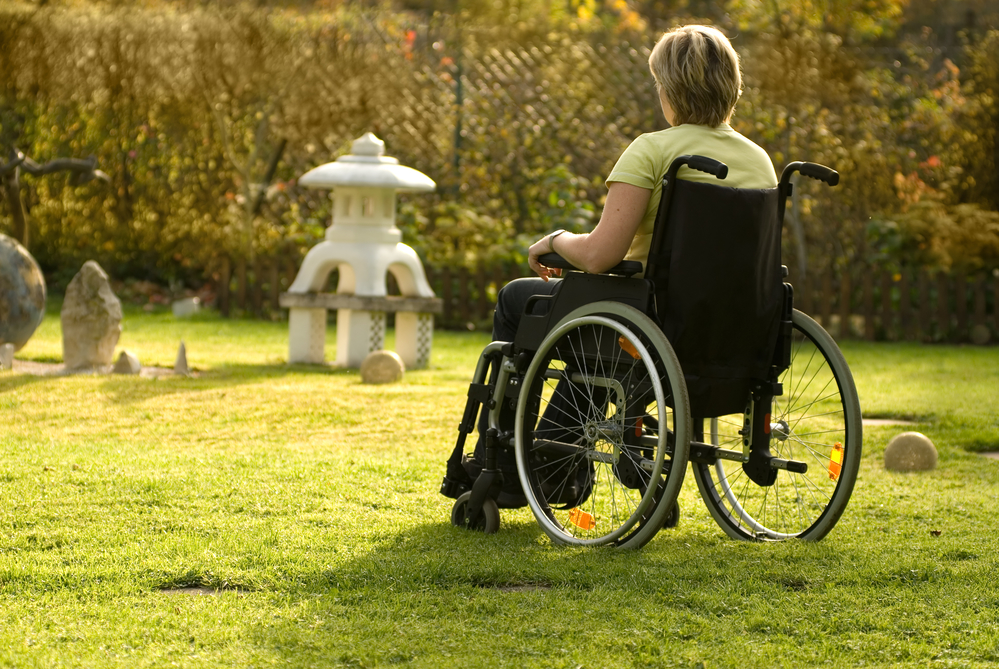For many of us, owning a chairlift at some point during our lives has made it possible to travel up and down stairs when it was no longer physically possible. For some of us, however, there comes a time when we no longer need it.
This may be due to recovery from an injury or a recent remodel to the home that no longer accommodates the current chairlift, requiring a replacement. Maybe it no longer works. Maybe it was not you who used it, but an older friend or family member who moved to a nursing home or passed away, and now there is no need for a chairlift in the home. The list could go on.
The Challenge
Unfortunately, getting rid of an unneeded chairlift is a surprisingly difficult task. There is often little secondhand purchase value for chairlifts, so simply reselling them is not always the best option. Of course, it never hurts to look into the list price, just in case.
The Options
Depending on your area, you may be able to sell some parts for scrap metal, or a company may be willing to come uninstall your model for free or a small fee. A quick web search may pull up such companies in your area, but be aware of scammers and illegitimate businesses. If you believe you’ve found a reputable service, be sure they know how to handle the electrical wiring aspects of the chairlift removal. Otherwise, your free removal service may end up needing costly repairs.
If you have the information, you may be able to contact the company you purchased the chair from; some may be willing to purchase and/or remove it from your home to refurbish it, or to use working parts for repairs on other models. This could likely be your best option, as the company likely has the most experience and familiarity with your model.
If there is a shop in your area that sells items for elderly and disabled people, they may be aware of other options. It doesn’t hurt to stop in or give them a call.
Facilities who recycle and dispose of items like older appliances and televisions may be willing to accept your chairlift. Your options will vary, depending on the area you live in; if you are unsure, it never hurts to call around.
As useful as chairlifts are, they are not typically objects in high demand, making them difficult to sell or dispose of. Still, the task isn’t impossible; someone can likely make use of your chairlift if you do some looking around. Usually, your best option will be to search around the available services in your area and make phone calls until you find an interested party.
05 Jul 2017
Summer Fun For Those With Disabilities
It’s summer and it’s time to get out there and have some fun! These days there are more and more adaptive things that people of any level of ability can take part in outside the house. So, take in some fresh air and a bit of sun with a few of these fun activities.
Biking
A nice day out on an adaptive bike can be a great way to spend the day. If you do not own an adaptive bike, many bike stores in most cities sell or even rent them depending on where you live.
Picnic
A lazy day in the shade of a big tree on a warm day can be very relaxing. Enjoying a meal with loved ones and people watching can be a great way to recharge your batteries. Many parks allow pets, so you can even bring the family pet to get some fresh air.
Zoo
Spending the day at the zoo is such a thrill. You can experience the park at your own pace and there are so many things too see. Many zoos also have educational classes and tours that you can take part in during the summer. With the cost of most zoos not being free, it can be a wise and affordable idea to consider picking up a seasonal pass.
Pool
Many pools have exercise classes as well as free and private swim hours. Swimming can be a great way to float away the day, soaking up sunshine as well as building muscle and motor skill development as well. You will be hard pressed to find a more relaxing way to spend a hot summer day.
Start a Garden
Gardening is a fun great way to spend the day getting out and being around nature in your own backyard. The feel of soil in your hands and the pleasure of watching something you have planted grow can be very therapeutic. Come harvest time the food tastes that much better knowing that the meal you are eating came from garden to table.
Visit an Aquarium or Museum
You can easily find yourself lost for the days on end exploring a museum or an aquarium with so much to see at these locations. The downside is that often these locations can be quite expensive. It is worth it to look to yearly or seasonal family pass. If you are local and senior you will likely find that a yearly pass is very affordable as by comparison to day fees.
Photography
You don’t have to be Ansel Adams to thoroughly enjoy taking photos outdoors. It gives a meaning to outdoor activities to search for great photo ideas and can provide a creative outlet.
Birdwatching
You can sit on your porch or go to a specific locale away from home to watch birds. Learn about different kinds of birds, identify them by their calls, and take photos if you like. You can even share your findings at ebird and help scientists monitor bird populations.
27 Jun 2017
Seniors Get Out And Enjoy Yourself This Summer
Summer is here, and it is time to get outside and soak up that sunlight! The days are long and beautiful, and there are just too many fun, relaxing and wonderful things to do than to stay cooped up in the house. While you are out and about taking in the summer weather, be mindful of the heat and wear sunscreen! Always practice good safety habits. Here are some ideas that hopefully will help keep you active whether inside or outside and in a positive frame of mind!
Exercise Ideas
Flea Markets and Craft shows
Walking around these events can be a fun way to get out, get a little exercise in, and find some good deals.
Nature Walks and Hikes
Set aside some time to go on a local nature walk. If it is not as easy to get back to mother nature due to where you live, consider a trip to the zoo for the day, where you can take in the animals at a leisurely pace.
Relaxing and Mobility-Friendly Ideas
Go Fishing
Whether you are going on a catch and release trip or to bring home dinner for, fishing can be a great way to spend a summer day! While you’re there why not have a picnic for lunch as well.
Watch an Outdoor Movie or Concert
Community events have gotten more and more popular recently and getting out in public to take in not only the atmosphere but a show is a great way to get out of the house for an evening.
Social Ideas
Join a Book Club
Summer book clubs sometimes meet in parks, but even if they meet indoors at least you’re among like-minded company and out of your house.
Volunteer
Check your local library and see if they would be interested in kids story time readings or other special events.
Other ideas
Sporting events
Anything from the neighborhood ball game to grandchildren swim meets can be a great way to spend the day. If you live in a larger town you might also have a local baseball team or even a professional sporting event.
Staycation Tourist
Depending on where you live many tourist cities offer everything from trolley rides to horse-pulled carriage and walking tours. Get out and take the time to see your city and all its sights.
20 Jun 2017
The Draw of the Water: Adaptive Surfing
For some who have suffered debilitating injuries, one of the biggest joys in life is overcoming the challenge of getting back to nature. The pressure of constantly being surrounded by four walls can quickly give anyone cabin fever, making the pull of nature and open skies nearly irresistible. One of the most popular water sports going right now for injured or disabled individuals is adaptive surfing programs.
Adaptive surfing has a wide range of benefits that go far beyond just getting out and back to Mother Nature. First off, it is not easy and it is a excellent form of fitness. Adaptive surfers will learn early on that both physical strength and endurance will come into play as well as core strength and balance as they develop the skills needed to surf.
Beyond the physical there are the mental benefits as well. Surfing has been said to be a great anti-depressant. The feeling of exhilaration as you skim the surface of the water has a profound effect on most surfers. After a day at the beach, it is hard not to be in a good mood.
With adaptive surfing, surfboards come in all shapes and sizes. Depending on the person and their needs as well as their skill level , there are a lot of variable to finding the proper board.
Thankfully, there are a plenty of large and caring groups out there that are more than willing and ready to assist you in learning to surf. In adaptive surfing there are two main methods:
Adaptive Prone
The prone style can be done in an assisted and an unassisted fashion. Prone-assisted surfing often has someone that will assist the surfer in catching a wave. This can be done by paddling or pushing them into the proper position as well as helping the surfer back onto their board after catching a wave.
Prone-unassisted is the adaptive style of independent athletes that can catch their own waves and get back on their own board without assistance. Often the only assistance that adaptive surfers of this level need is help in and out of the water.
Waveski Boards
Waveski boards are surfboards that are designed for the surfer to sit upright and use with a kayak paddle to catch waves as they come in. These are excellent for first-time adaptive surfers as many often have room for an abled bodied person to help with navigating the surf until the surfer has the confidence to surf unassisted.
Installing a stairlift system in your home can be a substantial financial investment that, if cared for properly, will last a lifetime and provide those who need assistance quick and easy access to all parts of your home. There are several things that you can easily overlook that can quickly shorten the life of your stairlift. Many of these things are simple and easy to forget and can result in a broken or poorly running lift. Here are a few examples of things that are often overlooked that can have dire consequences in the long term for your stairlift.
Exceeding Your Stairlift Weight Limit
Probably the quickest way to run your stairlift to an early grave is to run the unit beyond its weight capacity. It can be very tempting to use your stairlift to carry heavy loads from one floor to another. Just ensure that you do so in both a safe manner and do not go over the stairlifts weight limits. Running your stairlift over its maximum weight limit can stress the entire system, potentially resulting in damage to the unit that can both take time and be costly to repair.
Poor Cleaning Habits
Simple cleaning habits can go a long way in extending the life of your unit. Keeping the lifts seat clean and free of dust and debris with the proper cleaning products can help keep the material from cracking or ripping for years to come. Stairlift track cleaning is easily overlooked, and the track can quickly build up dust that will over time make your unit work harder and less efficiently. Dust buildup can also contribute to stiff running tracks that will need to be lubricated to continue to run smooth.
Skipping Services
Skipping regular maintenance on your stairlift for one reason or another might not seem like a big deal. The reality is that each time you put off a scheduled service or maintenance, you are overlooking an opportunity to find any problems that might be addressed before they become larger issues. As is often the case with mechanical devices, problems start as something minor. Maintaining a regular service and maintenance schedule helps catch minor issues before they become major ones, as well as keeping your unit minor issue free.
With regular service and maintenance, attentive cleaning habits, and staying within the maximum weight limits of your unit, you can look forward to your stairlift having a very long life.
We have all experienced that sinking feeling when you walk in a building and head toward the elevator and see that out of service sign. That feeling of annoyance is fleeting once you have left the building and gone about your day.
Now, imagine if it were your home elevator that was broken. That feeling of annoyance would sit with you until it is repaired. Along with that very real emotion that comes with feeling like you are cut off from a portion of your home. Well, with that in mind here are a few simple things to keep in mind with your home system. Not doing these things will help keep it running smoothly for the extent of its life.
Running At Overcapacity
Having an elevator may seem like an easy way to take heavy loads from one floor to the next. Yet one of the fastest ways to shorten the life of your home elevator is by running your system overcapacity. This forces every part of your elevator to work harder to make the lift from floor to floor.
If you run your elevator overcapacity regularly you will likely begin to notice that it will start to run at uneven speeds.
Holding The Door
Do not interfere with the doors of your elevator as they close. Blocking your elevator doors might seem like a good idea to “hold” the elevator to get everything or everyone in the lift. But in fact with many newer elevator lift systems you can “time out” the elevator by holding the doors open. The resulting “time out” will then need to have a mechanic restart the system. If you need to keep the doors open longer than programed use the DOOR OPEN button that should be located on the selector panel.
Shenanigans
So, we all have been there as a kid and likely many of us have as adults as well we are in the elevator and it is descending to the ground floor. Just as we sense it is about to come to a stop we jump up and down. Well, it sure sounds fun and it was when were kids but unfortunately this action is very hard on your elevators lifetime as it puts stress on numerous parts of the lift. So, don’t bow to the temptation yourself or allow other people using the elevator to.
Forcing The Doors
Lastly it may seem like common sense but never try to pry open the doors while in the elevator. If you do manage to force the door open you can risk injuring yourself. Additionally, by forcing doors open you can damage the system resulting in the need for time consuming unnecessary repair to your elevator.
22 May 2017
Who Needs a Stairlift?
Stairlifts are great inventions that can really improve the lives of many people. It can be a strange thing to feel like you are cut off from parts of your own home. However, for those who find it difficult to move up and down levels in their house, this can be exactly the case. People who have trouble with stairs often find themselves adjusting their lives so that trips up or down the stairs aren’t necessary. This shouldn’t have to happen, stairlifts are a way for people in this situation to be able to gain a little bit of their mobility and independence back. But, who really can benefit from something like this?
The Elderly
If you’re thinking of a stairlift, you probably have an image in mind of an older person using it to go up and down stairs. This might be stereotypical, but that doesn’t mean it’s not true. As we age, we find that things which were once easy and taken for granted, like stairs, become difficult, if not impossible. For some, downsizing is the answer. For others, though, this is not an option they want to consider. Rather than shutting off the upstairs, a stairlift can provide the solution.
The Disabled
You don’t have to be a senior citizen to need and enjoy the benefits of a stairlift, however. If someone suffers from a disability that makes it difficult to walk, concentrate, keep their balance, or in some other way hampers their mobility, a stairlift can help them gain a small measure of independence. This can help someone whether they are 18 or 80.
The Injured
A third type of person who can benefit from a stairlift is one who has been injured. Maybe it’s a temporary injury, maybe it’s more long term. Either way, while the injury is getting in the way of their ability to move, a stairlift can help. In some ways, those who are temporarily unable to use the stairs are in a worse situation than those who have resigned themselves to it being a permanent condition, because there’s a good chance they haven’t had time yet to rearrange their life to deal with it. This means a frequent need to travel up and down the stairs, which can be difficult, painful, and often dangerous. The good news, though, is that stairlifts don’t have to be permanent, as they can be uninstalled when the need for them is over. Rented ones may be good for situations like this.
So, whether you’re young or old, a stairlift might be the solution you have been waiting for. If you’re tired of not being able to use your entire house, or depending on others to help you get around, then it’s time to look into taking your independence back. Call us today!
13 May 2017
Adaptive Skateboarding
Extreme sports are one of the fastest growing areas of sports on the planet. With everything from snowboarding and skiing to bmx biking, skateboarding, rollerblading, and dirtbiking, extreme sports are a massive growing phenomenon in the sports world.
The growing popularity of extreme sports athletes and extreme sporting events like the X-games have exploded the sport to new heights. What’s been incredible is that in many ways they are very similar to the Olympics in that they have a huge community for adaptive athletes. It is absolutely incredible to see what these athletes can do on bikes, skates, and skateboards.
Many people realize that there are Olympic sporting events for adaptive athletes, but are totally unaware that there are extreme sports for adaptive athletes too.
About Adaptive Skateboarding
Jon Comer is one of the many adaptive skateboarders that has built quite the reputation in the extreme sports world. He is a below-the-knee amputee that has been crushing it in extreme sports. From the age of 10, Jon fell in love with skateboarding and never looked back. Jon, who is now 30, has been skating for six years on the Van’s Warped Tour. he is endorsed and sponsored by all kinds of skate brand companies, and has podium and placed at several professional extreme sporting events.
He has traveled the nation sharing his story with extreme sports enthusiasts and other adaptive athletes, and has even helped coach and teach other adaptive athletes on how to skate to their full potential.
The main difference that Jon notes between him and athletes that have two biological feet, is that he only has one foot to actually be able to feel the board beneath him. Skateboarding is significantly easier when you can feel the board beneath you without looking at it. In years of skateboarding, Jon has gotten really good at just being able to use instinct, instead of feel. Another thing that is really interesting about Jon is that he uses the same prosthetic that he has for walking around as he does for skateboarding. Most adaptive skateboarders will have different prosthetics for skating vs. just everyday walking, but he prefers to use the same.
Now, he uses a special prosthetic for both skating and everyday walking that has allowed him to take his athleticism to new heights. He says that with his new prosthetic, he can do tricks that he never thought were possible.
05 May 2017
Signs Your Home Elevator Needs Service
Knowing when to recognize the signs that your San Francisco, CA home elevator is in need of repair will save you lots stress and frustration. Thankfully, most mechanical things begin to show signs of wear long before something actually breaks. If you know what you are looking for, you can take steps to make the repair as painless and prompt as possible. The first thing that you need to understand is that an elevator is a machine and machines break down. Therefore it is not a matter of if your elevator will break but when. Now here are a few tips that you can look out for that will keep you on top of things and aware that there is an issue before you find yourself or a loved one stuck in a broken elevator that needs repair.
Uneven Stops
The elevator coming to a stop below or above the floor is a clear sign of brake wear. This is known as Mid-Leveling, this wear, like that of your car’s brakes, will occur over time and is natural. At first you might not notice it but it can in time become a hazard. Passengers might trip or stumble causing them to fall and wheelchairs may not be able to enter or exit the elevator. Once you become aware of any significant repetitive stoppage, you need to call a professional to have the elevator fixed and inspected.
Uneven Speeds
We have all been there, you hop on the elevator and it has that jerky movement or takes way too long to come to a stop and allow the doors to open. This is a sure sign that you are likely due for an elevator replacement. This is more common when overfull elevators when people pile in and overwork the elevator. Day after day it becomes taxing and reduces the overall lifetime of your elevator. This will only get worse with age so get out in front of this or everyone will be taking the stairs.
Break Downs
If an elevator begins to regularly break down, the situation is only going to get worse. At this state of constant repair, you need to ask yourself when it becomes more affordable to repair the existing machine and replace it with something more reliable.
Once you do decide to repair or replace your elevator, make arrangements to do it in such a way that it impacts the users mobility as little as possible. Schedule the repair or replacement when they will be away or when someone else can be in the home to assist them.
Living with a disability brings challenges. We all realize and recognize that. Challenges also create a desire to rise above and feel as though a win has been accomplished. It’s easy to get caught up in attaining what we might call “big” victories throughout the process of overcoming challenges. However, don’t underestimate the “little” victories.
It’s not always the Paralympics: Celebrate little victories
When you allow yourself to revel in the smallest of achievements, it builds your confidence. Why is confidence important? Because it creates belief that “I can do it.”
When you have a belief within that you can overcome obstacles, you gain a sense of power that snowballs over time. If you only focus on the obstacles in front of you, it’s easy to begin feeling powerless and lost.
Take the time to celebrate your next little victory in life and add another nugget to your “confidence bank”.
Multiple little victories lead to larger wins
Don’t underestimate this point. When you have a big goal in front of you, it can seem as though it’s so far away that ultimate achievement is impossible.
Instead of focusing on the larger goal, break up the big goal down into parts. Then, simply focus on the first part that must get accomplished in order to then move on to the next. A great way to do this is to think backwards. Ask yourself what you need to do right before the large goal is done. Then, what would have needed to happen prior to that? And so on…
Know the big goal is out there but don’t focus on it. Back up the process into steps. Then, simply start hacking away on that first step. Each time you finish a step, celebrate it!
Celebrating little wins changes your mood
It’s true that how you feel affects how you act. If you’re depressed because your overall goals seem too far away, it’s unlikely that you’ll do anything toward accomplishing them.
On the other hand, if you feel good, or inspired, then you’re going to take more action. Further action brings another little victory. Another small victory raises your confidence just a bit more. More confidence in yourself makes you feel more happiness…
